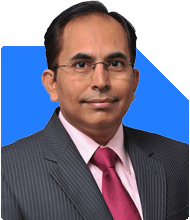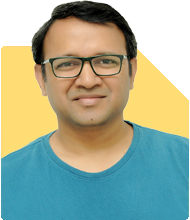Ramalingam Kalirajan |10894 Answers |Ask -Follow
Mutual Funds, Financial Planning Expert - Answered on Dec 07, 2024
He has an MBA in finance from the University of Madras and is a certified financial planner.
He is the director and chief financial planner at Holistic Investment, a Chennai-based firm that offers financial planning and wealth management advice.... more

What should be the corpus one should have in order to get 150000 per month post retirement ??
Factors Influencing Corpus
Monthly Income Requirement
Rs. 1,50,000 per month translates to Rs. 18,00,000 annually.
Inflation Impact
With an average inflation rate of 6%, future expenses will significantly increase.
Withdrawal Rate
A safe withdrawal rate is typically 3-4% per year. This ensures the corpus lasts throughout retirement.
Post-Retirement Investment Returns
Assume a conservative return of 7% from a balanced portfolio after retirement.
Longevity
Plan for a 30-35 year retirement horizon to ensure financial independence.
Calculating the Corpus
Using a 4% withdrawal rate, the corpus should be:
Rs. 18,00,000 ÷ 4% = Rs. 4.5 crore.
Adjust for Inflation:
If retirement is 10 years away and inflation is 6%, you’ll need about Rs. 8 crore to maintain the same lifestyle.
Steps to Build This Corpus
Increase Equity Exposure Now
High-growth equity funds can accelerate wealth accumulation during the pre-retirement phase.
Gradual Shift to Conservative Assets
Transition to hybrid or debt funds five years before retirement to protect the corpus from market volatility.
Systematic Withdrawals
Post-retirement, use SWPs in mutual funds to create a steady monthly income of Rs. 1,50,000.
Health and Emergency Funds
Maintain a separate contingency fund to handle medical emergencies and other unexpected costs.
Tax Implications
Equity Fund Withdrawals:
LTCG above Rs. 1.25 lakh taxed at 12.5%.
Debt Fund Withdrawals:
Taxed as per your income slab.
Plan withdrawals tax-efficiently to optimise cash flow.
Final Insight
With proper planning, achieving a corpus of Rs. 8 crore is feasible for a comfortable retirement. Consult a Certified Financial Planner to optimise your investments and roadmap.
Best Regards,
K. Ramalingam, MBA, CFP,
Chief Financial Planner,
www.holisticinvestment.in
https://www.youtube.com/@HolisticInvestment
You may like to see similar questions and answers below
Ramalingam Kalirajan |10894 Answers |Ask -Follow
Mutual Funds, Financial Planning Expert - Answered on May 17, 2024
Janak Patel |71 Answers |Ask -Follow
MF, PF Expert - Answered on Feb 04, 2025
Ramalingam Kalirajan |10894 Answers |Ask -Follow
Mutual Funds, Financial Planning Expert - Answered on Jun 21, 2025
Naveenn Kummar |235 Answers |Ask -Follow
Financial Planner, MF, Insurance Expert - Answered on Sep 11, 2025
Purshotam Lal | Answer |Ask -Follow
Financial Planner, MF and Insurance Expert - Answered on Oct 11, 2025
Radheshyam Zanwar |6747 Answers |Ask -Follow
MHT-CET, IIT-JEE, NEET-UG Expert - Answered on Dec 16, 2025
Shalini Singh |181 Answers |Ask -Follow
Dating Coach - Answered on Dec 16, 2025
Patrick Dsouza |1429 Answers |Ask -Follow
CAT, XAT, CMAT, CET Expert - Answered on Dec 16, 2025
Nayagam P P |10858 Answers |Ask -Follow
Career Counsellor - Answered on Dec 16, 2025
Nayagam P P |10858 Answers |Ask -Follow
Career Counsellor - Answered on Dec 16, 2025
Samraat Jadhav |2510 Answers |Ask -Follow
Stock Market Expert - Answered on Dec 16, 2025
Samraat Jadhav |2510 Answers |Ask -Follow
Stock Market Expert - Answered on Dec 16, 2025
Nayagam P P |10858 Answers |Ask -Follow
Career Counsellor - Answered on Dec 16, 2025
Nayagam P P |10858 Answers |Ask -Follow
Career Counsellor - Answered on Dec 16, 2025
Ramalingam Kalirajan |10894 Answers |Ask -Follow
Mutual Funds, Financial Planning Expert - Answered on Dec 16, 2025





























